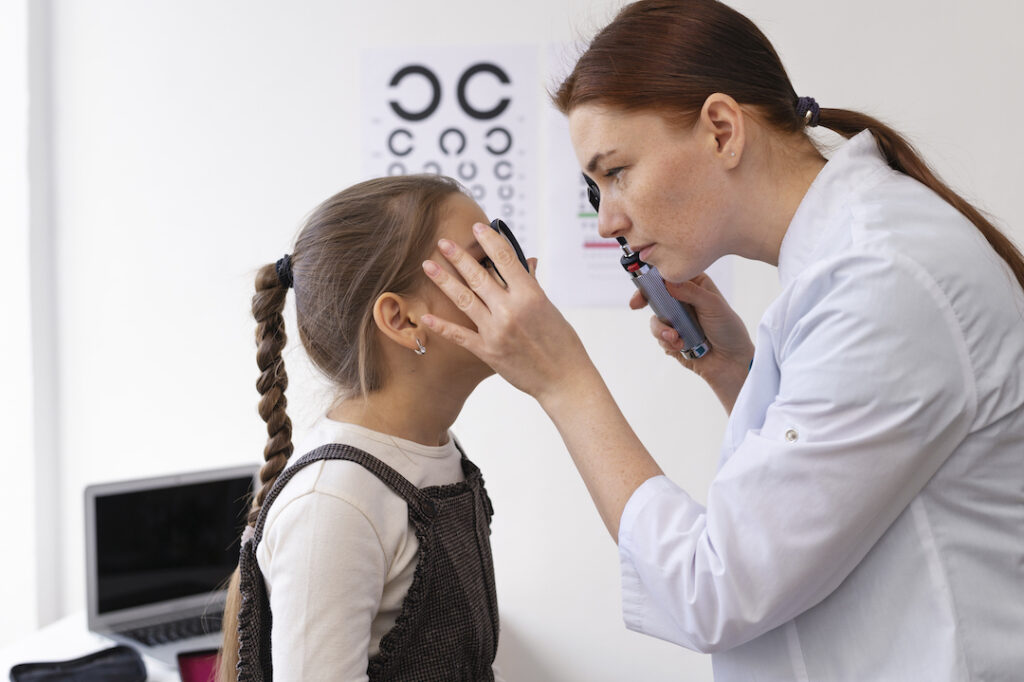Safeguarding the Senses: The Importance of Early Treatment for Pediatric Cataracts
(Posted on Thursday, January 18, 2024)

This story is part of a series on the current progression in Regenerative Medicine. This piece is part of a series dedicated to the eye and improvements in restoring vision.
In 1999, I defined regenerative medicine as the collection of interventions that restore tissues and organs damaged by disease, injured by trauma, or worn by time to normal function. I include a full spectrum of chemical, gene, and protein-based medicines, cell-based therapies, and biomechanical interventions that achieve that goal.
Pediatric cataracts are a rare but severe condition that can cause permanent vision loss in children. Though it mainly affects young ones, it can have a devastating impact on their developing visual system. Early detection and timely treatment are crucial, as good eyesight is essential in almost every aspect of life. There are two types of pediatric cataracts, making accurate diagnosis imperative for effective treatment.
Thankfully, several treatment options are available for pediatric cataracts, including some innovative treatments currently undergoing clinical trials. This article will provide everything you need about pediatric cataracts, including their different types and the latest treatment options.
What are Pediatric Cataracts?
Pediatric cataracts are a condition that causes cloudiness or opacity in the lens of a child’s eye. This cloudiness can affect vision and may lead to blindness if left untreated. Unlike adult cataracts, which can usually be treated with surgery, pediatric cataracts require specialized care and treatment.
The effects of pediatric cataracts on a child’s vision can vary depending on the severity of the condition. Some children may experience blurred vision or a decrease in visual acuity. In contrast, others may have difficulty focusing or may see double. Pediatric cataracts can sometimes cause the eyes to appear misaligned or cause uncontrolled eye movements.
There are two main types of pediatric cataracts: congenital and acquired. Congenital cataracts are present at birth and may be caused by genetic factors, maternal infections, or metabolic conditions. Acquired cataracts, on the other hand, develop after birth and can be caused by external factors such as trauma or certain diseases.
Current Treatment Options for Pediatric Cataracts
Treatment options for cataracts may include surgery, glasses, or contact lenses, depending on the severity and underlying cause of the condition. In the case of pediatric cataracts, the primary treatment is a surgical procedure called cataract extraction. This surgery is typically performed under general anesthesia. During the process, the cloudy lens is carefully removed from the eye. An intraocular lens (IOL) may sometimes be implanted in the eye to replace the affected lens.
Modern surgical techniques, such as micro-incision cataract extraction and primary intraocular lens (IOL) implantation, have shown effectiveness in clinical trials for children between two months to 16 years old. The Toddler Aphakia and Pseudophakia Study (TAPS) revealed that IOL implantation was relatively safe for children above six months but younger than two years. IOL placement in the bag was the most preferred site. However, if the support for the posterior capsule is insufficient, putting the IOL in the ciliary sulcus is also an option.
Clinical Trials for Childhood Cataracts
While surgical management is the primary focus of such trials, a few studies have looked into the long-term outcomes of pediatric cataract surgery and primary intraocular lens (IOL) implantation in children. For instance, the Infant Aphakic Treatment Study (IATS) aimed to assess the effectiveness of primary IOL implantation in infants below six months of age who underwent cataract-removal surgery, with varying results.
The study found that while primary IOL implantation could potentially offer improved visual outcomes and a reduced incidence of strabismus, the infants who received it experienced more adverse events and additional intraocular surgeries than those who did not, some of which included glaucoma, corneal edema, and retinal detachment. The study’s authors attribute such adverse events to the complexity of the surgery, making it challenging to avoid complications entirely.
There is limited non-surgical treatment available for pediatric cataracts. However, some treatments provide hope for improving visual outcomes in children. It is possible to manage some pediatric cataracts without surgical intervention. Small, partial, or paracentral cataracts can be monitored through observation. Pharmacologic pupillary dilation can also help improve pupil size and enable children to see better.
Furthermore, the cause of cataracts is highly variable, with bilateral congenital cataracts being the most common cause of treatable childhood blindness. Currently, 42 known genes may lead to cataract formation in humans or mice, with even more genes expected to be involved in cataract formation, as there are still families with cataracts from unknown gene mutations and cataractous mouse mutant lines that have yet to be characterized at the molecular level.
The course and prognosis of pediatric cataracts are also challenging to predict, as the likelihood and rate of progression depend on several factors, such as the presence of other ocular or systemic abnormalities. Nevertheless, ongoing research and clinical trials offer hope for better managing and treating pediatric cataracts.
To learn more about the eye, read more stories at www.williamhaseltine.com

